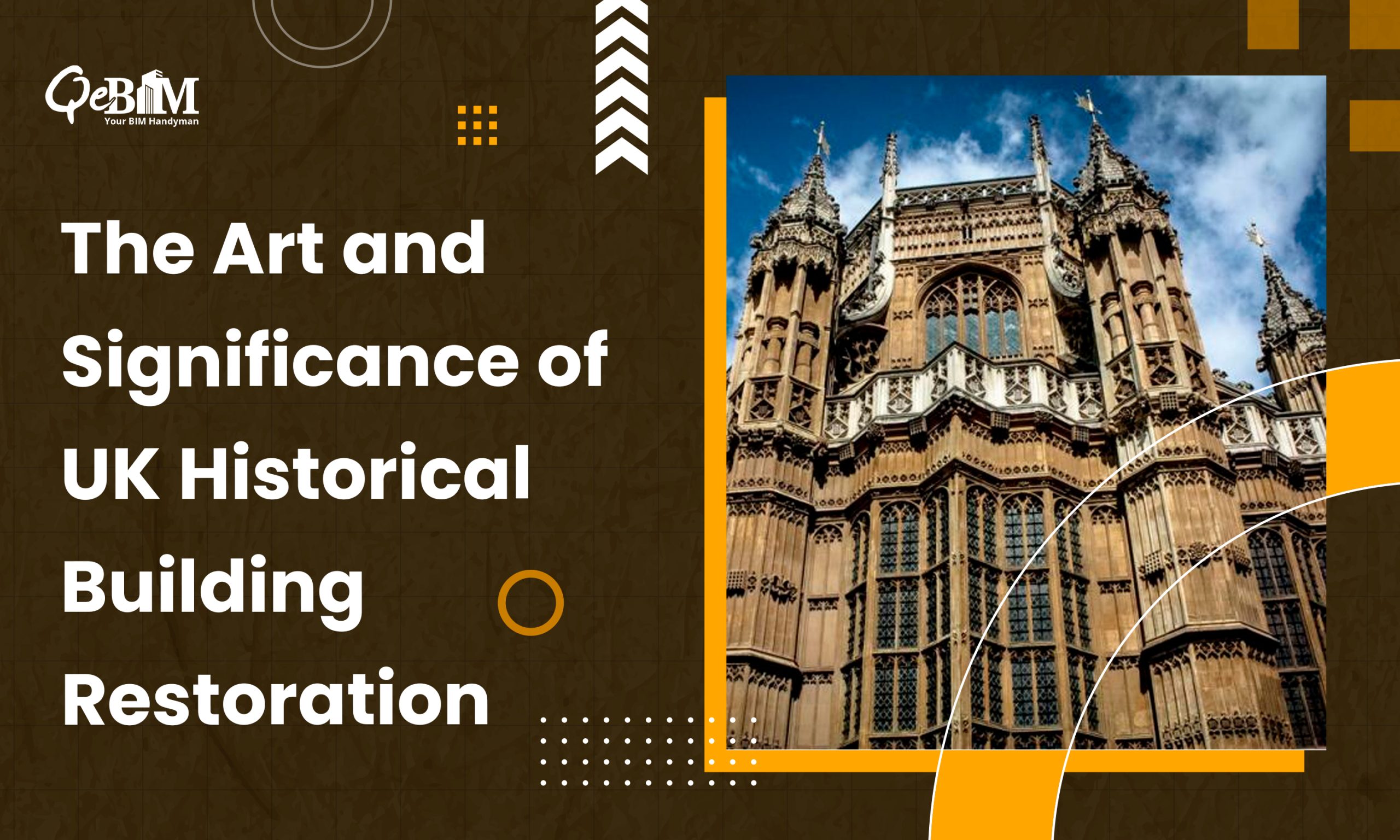Introduction:
The United Kingdom boasts a rich shade of history, woven through centuries of architectural marvels. From medieval castles to Georgian townhouses, every edifice narrates a distinct tale of bygone eras. As the relentless march of time persists, safeguarding these historical structures takes on heightened importance, guaranteeing that forthcoming generations can forge a meaningful connection with their cultural legacy. In recent years, there has been a growing focus on historical building restoration in the UK, reflecting a collective commitment to safeguarding our architectural legacy and this can be done by opting for effective Scan to BIM Services.
I. The Significance of Historical Buildings:
Historical structures go beyond mere bricks and mortar; they serve as the tangible manifestation of our cultural identity. These structures serve as living testimonials to the craftsmanship, design, and societal values of bygone eras. From the iconic Tower of London to the charming thatched cottages of the Cotswolds, these buildings offer a glimpse into the past, fostering a sense of continuity and connection.
II.Challenges Faced by Historical Buildings:
While these structures stand as testaments to endurance, they are not impervious to the ravages of time. Weathering, pollution, neglect, and even natural disasters can threaten their structural integrity. Additionally, changing building codes and the need for modern amenities often pose challenges to the preservation of historical authenticity. Striking a delicate and thoughtful balance between preserving the past and meeting the demands of the present is essential.
III. The Role of Restoration in Preservation:
Historical building restoration is a multifaceted process that involves meticulous planning, expert craftsmanship coupled with a profound comprehension of the building’s historical context. This process goes beyond simple repairs; it seeks to revitalize the building while retaining its authenticity. Restoration projects aim to breathe new life into structures that have weathered the sands of time, allowing them to continue standing as proud symbols of our shared heritage.
IV. Successful Restoration Projects in the UK:
Several notable historical building restoration projects in the UK serve as shining examples of how dedicated efforts can bring these architectural gems back to life. One such project is the restoration of the Hampton Court Palace in London. This Tudor masterpiece underwent extensive restoration work to revive its original splendour, showcasing the stunning architectural details that had faded over the centuries.
Another noteworthy example is the restoration of St. Pancras Renaissance Hotel in London. Originally built as the Midland Grand Hotel in the Victorian era, the building fell into disrepair before being meticulously restored to its former glory. The project not only preserved the historical integrity of the structure but also transformed it into a luxurious hotel that continues to enchant visitors.
V.Government Initiatives and Conservation Organizations:
Recognizing the importance of historical building preservation, the UK government has played a pivotal role in supporting restoration initiatives. Various grants and incentives are available to property owners and organizations committed to restoring historical buildings. Conservation organizations, such as the National Trust and English Heritage, also contribute significantly to the cause by providing expertise, funding, and advocacy for preservation efforts.
VI. Community Engagement and Education:
Preserving historical buildings goes beyond the physical restoration; it involves engaging the community and fostering an appreciation for cultural heritage. Educational programs, guided tours, and public events help promote awareness regarding the historical importance of these buildings. By involving local communities, restoration projects not only gain support but also Foster a feeling of pride and ownership within the local residents.
VII. The Economic and Cultural Impact:
Investing in historical building restoration has a ripple effect on the economy and cultural landscape. These projects create job opportunities for skilled craftsmen, architects, and historians, contributing to the growth of the heritage conservation sector. Additionally, restored historical buildings often become tourist attractions, boosting local economies and promoting cultural tourism.
Conclusion:
Historical building restoration in the UK is a testament to our commitment to preserving the cultural fabric that binds us to the past. These projects not only breathe new life into architectural marvels but also serve as a bridge between generations and this is done with the use of comprehensive Architectural BIM Services.
As we continue to navigate the challenges of the modern world, our dedication to the restoration of historical buildings ensures that the architectural legacy of the UK remains an enduring source of inspiration and pride for years to come.





